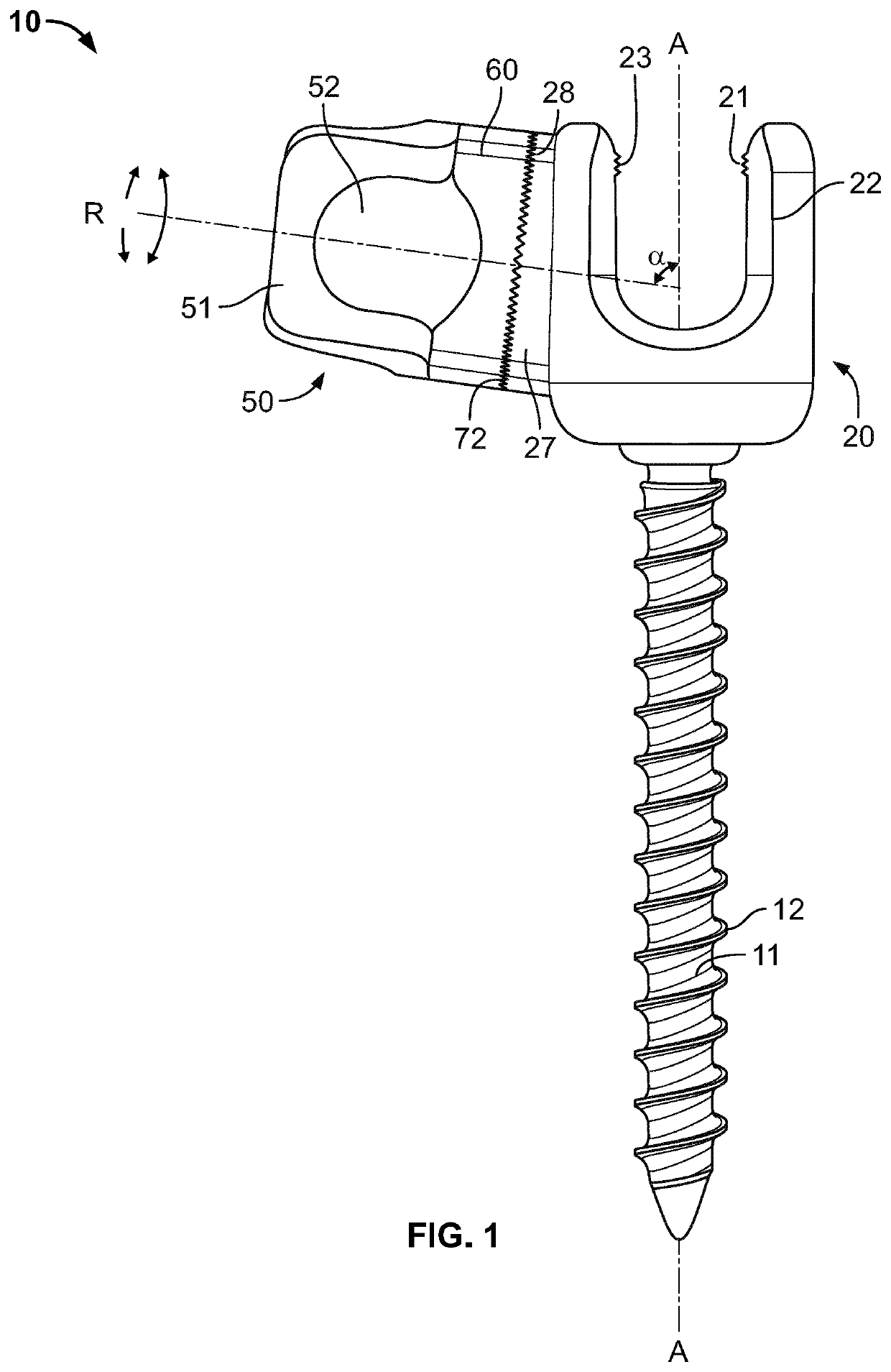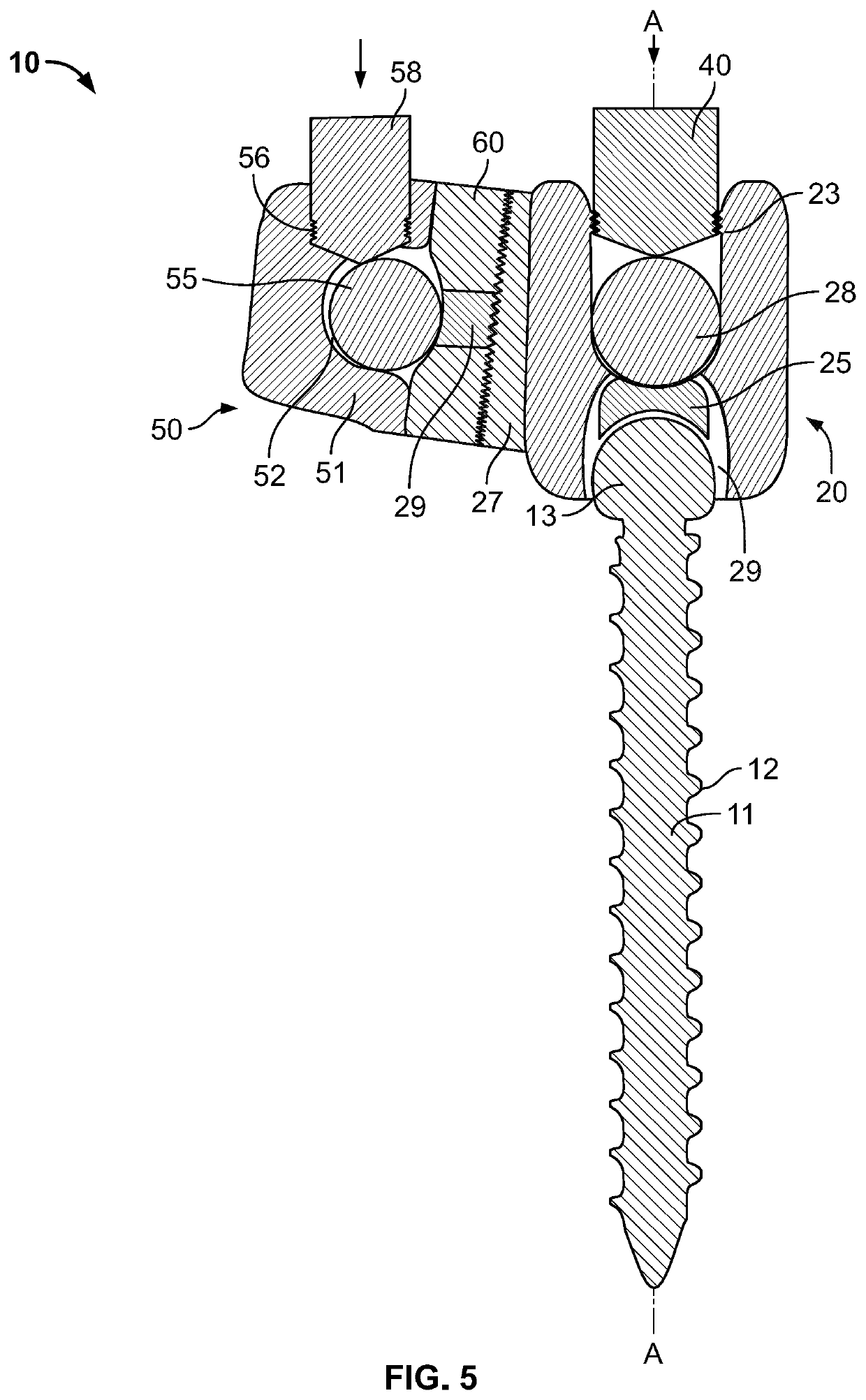Spinal fixation device with rotatable connector
a fixation device and spindle technology, applied in the direction of osteosynthesis devices, internal osteosynthesis, internal osteosynthesis, etc., can solve the problems of pain for patients, affecting the healing of bony fusion, and requiring revision surgery, etc., to achieve the effect of convenient surgery, convenient surgery, and convenient rod placemen
- Summary
- Abstract
- Description
- Claims
- Application Information
AI Technical Summary
Benefits of technology
Problems solved by technology
Method used
Image
Examples
Embodiment Construction
[0023]Referring now in detail to the drawings, FIG. 1 shows the pedicle screw 10 according to the invention. Pedicle screw 10 consists of a shaft 11 having helical threads 12 for attaching to bone, a first rod coupling head 20 and a second rod coupling head 50. First rod coupling head 20 is in the form of an open connector, with side walls 22, a cavity 21 for receiving a rod, and threads 23 near a top section for receiving a set screw. Shaft 11 has a longitudinal axis A running through it. Connected to first rod coupling head 20 is a second rod coupling head 50, which is connected to a connector segment 27 of first rod coupling head 50 by a connector plate 60. Connector plate 60 is connected so as to be freely rotatable about an axis of rotation R relative to connector segment 27. Axis of rotation R is not perpendicular to longitudinal axis A, and instead is disposed at an angle α of approximately 83 degrees from axis A, or in a range of preferably 70-85 degrees from axis A. A C-sha...
PUM
 Login to View More
Login to View More Abstract
Description
Claims
Application Information
 Login to View More
Login to View More - R&D
- Intellectual Property
- Life Sciences
- Materials
- Tech Scout
- Unparalleled Data Quality
- Higher Quality Content
- 60% Fewer Hallucinations
Browse by: Latest US Patents, China's latest patents, Technical Efficacy Thesaurus, Application Domain, Technology Topic, Popular Technical Reports.
© 2025 PatSnap. All rights reserved.Legal|Privacy policy|Modern Slavery Act Transparency Statement|Sitemap|About US| Contact US: help@patsnap.com



